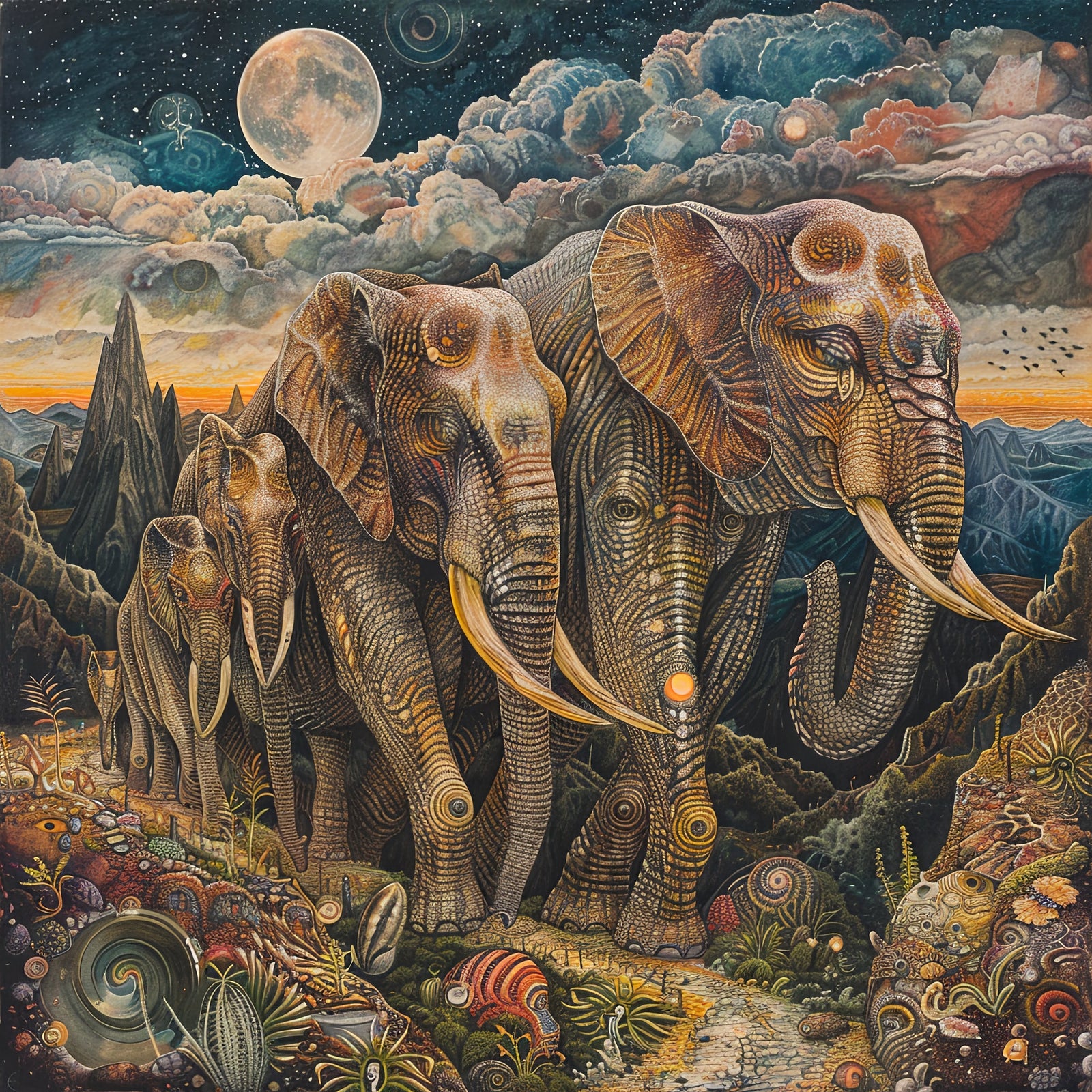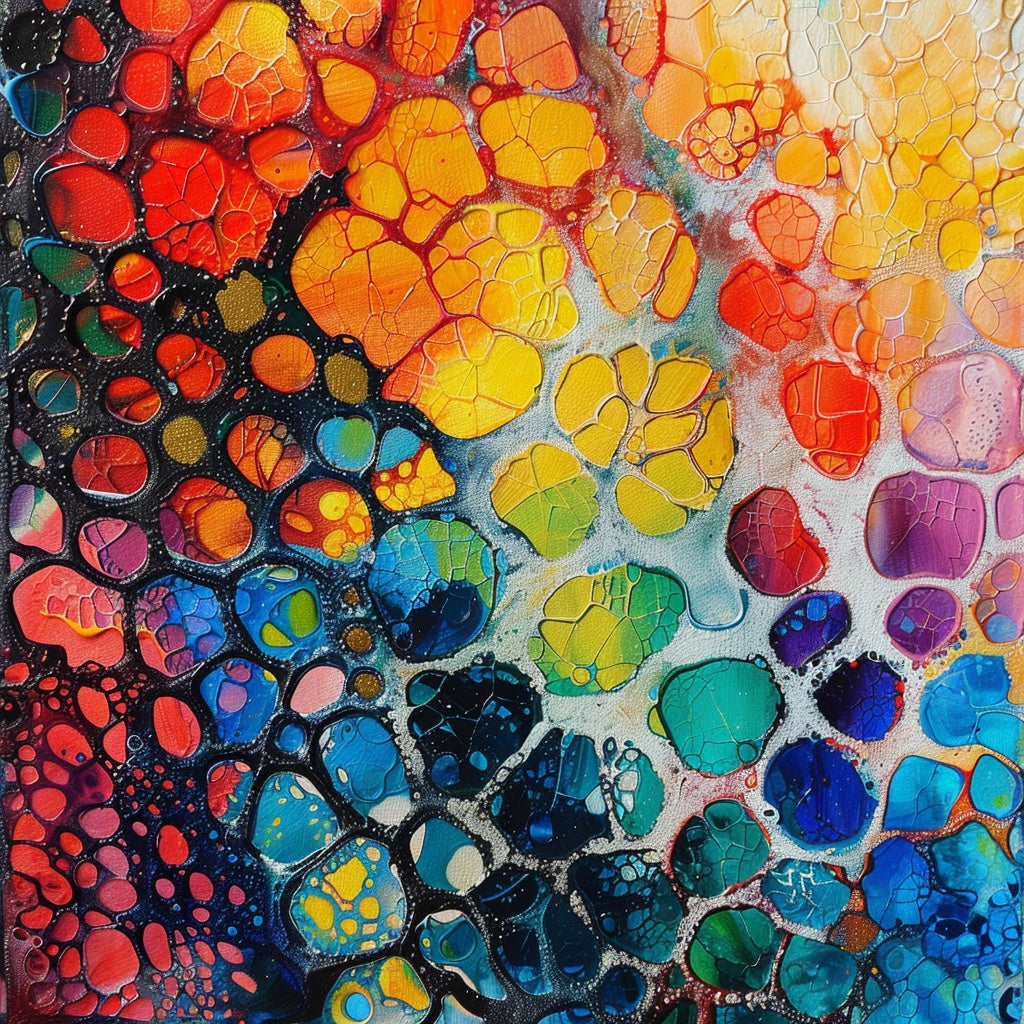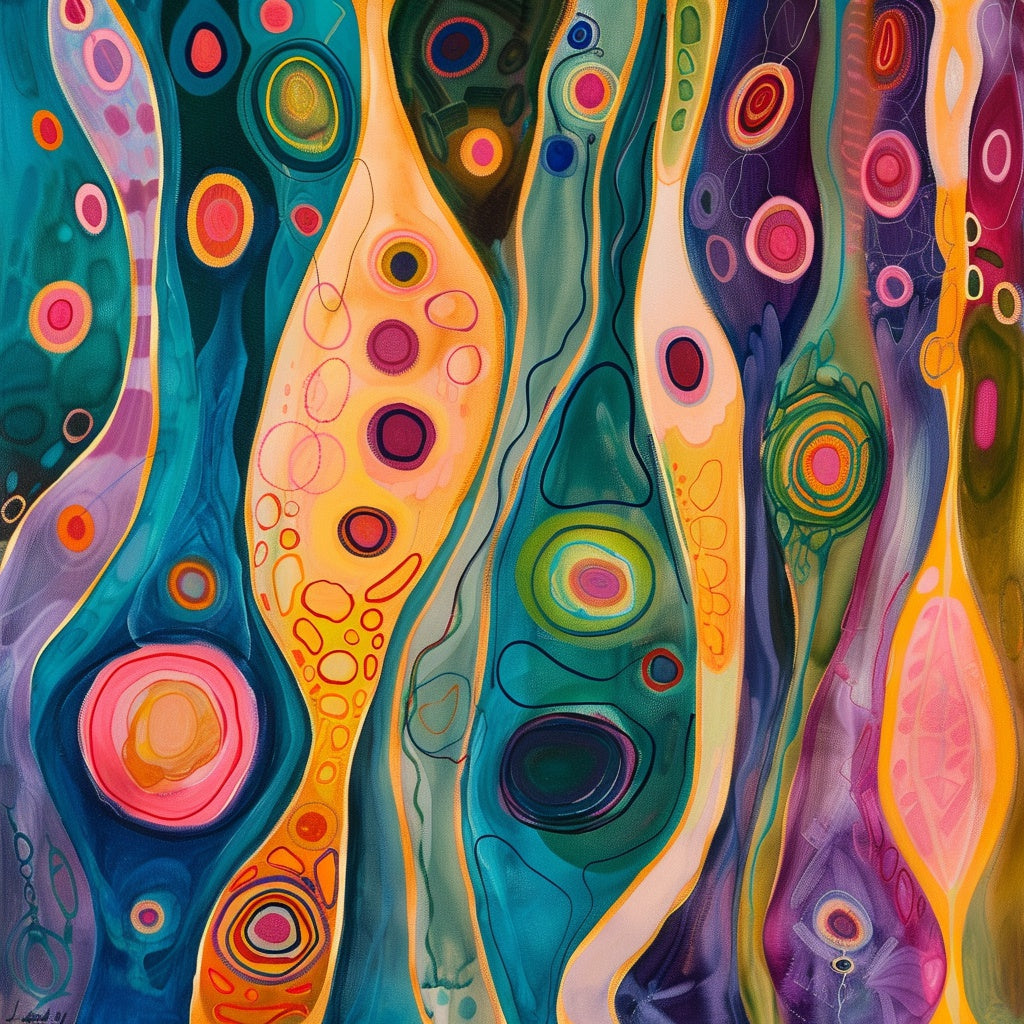AI Art: Revolutionizing Creativity or Mimicking Human Expression?
The art world is transforming profoundly with the rise of Artificial Intelligence (AI). From generating captivating visuals to assisting artists in their creative processes, AI is rapidly changing the art landscape. This post delves into the capabilities of AI in art, explores notable examples, and compares AI art with traditional art forms. We will explore the expanding role of AI and its impact on the future of creativity.
Table of Contents
- The Rise of AI in Artistic Creation
- Notable Examples of AI Art
- AI Art vs. Traditional Art: A Comparison
- AI's Expanding Role in the Art World
- The Benefits and Limitations of AI Art
- The Future of AI Art
The Rise of AI in Artistic Creation
AI art generators are transforming how art is created. These tools utilize algorithms to produce images based on text prompts, making art creation more accessible to a wider audience. Platforms such as DALL-E 2, Midjourney, and Stable Diffusion have gained popularity, allowing users to generate unique visuals with relative ease. However, crafting effective prompts and refining the generated output requires skill and understanding. Platforms like Artbreeder and Lensa AI are increasingly used to create stylized portraits and imaginative scenes.
The impact of AI extends beyond image generation. AI algorithms now assist artists by automating repetitive tasks, offering new perspectives on color, form, and composition. Some artists use AI-generated patterns as a foundation, blending machine output with their artistic flair. Furthermore, AI enables collaborative processes where the technology introduces randomness and surprise, which artists shape and refine.
AI Beyond Visual Arts
The influence of AI is not limited to visual arts. AI generates and optimizes building designs in architecture, considering factors like usage, location, and environmental impact. AI also aids in construction planning and creating smart buildings that adjust settings based on various parameters, contributing to more sustainable and environmentally friendly designs. In interior design, AI helps personalize design solutions by analyzing client preferences and assists in selecting harmonious color palettes. These applications highlight AI’s broader impact on various creative industries and its potential to transform how we interact with designed spaces.
Notable Examples of AI Art
The emergence of AI art has led to groundbreaking works that challenge traditional notions of creativity. One significant example is the "Portrait of Edmond de Belamy" created by the Parisian collective Obvious in 2018. This AI-generated portrait sold for $432,500 at a Christie's auction, marking a significant milestone for AI art. This sale sparked widespread discussions about art's nature, authorship, and the role of AI in creative processes.
Another notable example is "Unsupervised," an immersive installation by AI artist Refik Anadol, created in collaboration with data scientists at the Museum of Modern Art (MoMA). This constantly changing animation of abstract visuals was trained on MoMA's vast art collection from the past 200 years. The result is a unique art style that reimagines modern art history and explores future possibilities. "Unsupervised" demonstrates AI's ability to generate entirely new forms of artistic expression, moving beyond mere mimicry.
Other significant examples of AI art include "The Next Rembrandt" and "Deep Dream," which also showcase the diverse applications of AI in art. These examples highlight AI’s capacity to produce both thought-provoking and captivating creations.
AI Art vs. Traditional Art: A Comparison
Traditional art, created by human hands with physical media, has a long history and often reflects the artist's personal experiences and emotions. Traditional art includes painting, drawing, sculpture, and other forms of artistic expression using physical media. This art is imbued with unique perspectives and imperfections, reflecting the human element. Artists often leave elements rough or unrefined, enhancing the work’s character and making it relatable and evocative. Imperfection is a key characteristic, showing the artists' human flaws and struggles.
In contrast, AI art relies on algorithms and data patterns, often lacking the emotional depth and authenticity of human expression. AI can struggle with elements that human artists naturally experiment with, such as hands, facial expressions, and conveying emotions. AI strives for precision and perfection, sometimes making the art feel sterile or lacking the rawness that makes human art so impactful. However, AI art can be generated much faster and more efficiently than traditional art, enabling artists to create more pieces in less time. AI can also produce unique creations that would be difficult or impossible for humans.
Key Differences
Here's a summary of the key differences between AI and traditional art:
-
Creation Process: AI art uses algorithms and machine learning, while traditional art uses human skill and creativity.
-
Speed and Efficiency: AI art is faster and more efficient; traditional art is slower and more time-consuming.
-
Emotional Depth: AI art often lacks emotional depth, whereas traditional art can evoke strong emotions.
-
Originality: AI art can sometimes be derivative, while traditional art is often unique and personal.
-
Control: Artists have limited control over AI art but complete control over traditional art.
-
Imperfection: AI art often strives for perfection, whereas traditional art embraces imperfection.
AI's Expanding Role in the Art World
AI's role in the art world extends beyond art creation. AI is now a powerful research tool for galleries and art experts, analyzing market trends, tracking influential figures, and authenticating artworks. AI can identify artworks, assess their value, and even predict future market trends by analyzing vast datasets from historical records and auction catalogs. This application of AI has the potential to bring efficiency and transparency to the art world, aiding artists and collectors in making informed decisions.
AI as an Artistic Partner
AI is increasingly used as a creative partner, augmenting human creativity. Artists are now collaborating with AI, allowing the technology to introduce elements of randomness and surprise that they can refine. This collaboration is creating new art styles and previously impossible possibilities.
The Benefits and Limitations of AI Art
AI art offers numerous benefits, potentially revolutionizing the art world. Accessibility is a key advantage, as AI art democratizes creativity, allowing anyone with a computer or smartphone to engage with art. This inclusivity promotes a wider appreciation and provides creative opportunities for those who may not have access to traditional art resources. AI can also enhance creativity and exploration by generating unique and original ideas, pushing artistic boundaries, and enabling experimentation with unconventional art styles. Research suggests that AI can enhance human creative productivity by 25% and increase the value of artwork by 50%. AI algorithms can automate time-consuming tasks like color selection, enabling artists to focus on higher-level creative work. The ability of AI to create unique works opens new creative possibilities. Furthermore, AI art provides opportunities for individuals with disabilities who may face challenges with traditional art forms. By providing alternative tools and methods, AI empowers these individuals to express their creativity and share their unique perspectives.
Despite the benefits, AI art also has limitations. AI-generated art often lacks the emotional depth and personal touch that comes with human-made art. While AI algorithms can generate art, the artist has limited control over the final product.
Summary of Benefits
-
Accessibility: Democratizes art creation for a broader audience.
-
Enhanced Creativity: Generates unique and original ideas, pushing artistic boundaries.
-
Efficiency: Automates time-consuming tasks, freeing artists to focus on higher-level creative work.
-
Innovation: Creates novel and unique art, opening new creative possibilities.
-
Empowerment: Provides tools for individuals with disabilities to express themselves creatively.
Summary of Limitations
-
Lack of Emotional Depth: AI-generated art may lack the emotional depth and personal touch of human-made art.
-
Limited Creative Control: Artists have limited control over the final output, as the algorithm makes decisions about composition and style.
The Future of AI Art
The future of AI art will likely involve a blend of human creativity and machine intelligence. AI will continue to evolve, becoming more sophisticated in generating realistic artwork. However, the human element will remain crucial as artists adapt to this landscape, using AI to enhance their creativity.
Potential developments include increased collaboration between artists and AI, where AI manages mundane tasks, allowing artists to focus on higher-level creative decisions. This collaboration could lead to "generative synesthesia," blending human exploration and AI to discover new creative workflows. AI may lead to new artistic movements that blend traditional techniques with cutting-edge technology. Interactive AI-generated art could respond to viewer input, creating dynamic and personalized experiences. AI is also enabling the creation of data-driven art, transforming raw data into compelling visuals, bridging the gap between science and art.
Key Future Trends
-
Increased Collaboration: Closer collaboration between artists and AI, with AI handling mundane tasks.
-
New Artistic Movements: Blending traditional techniques with cutting-edge technology.
-
Enhanced Interactivity: AI-generated art responding to viewer input, creating personalized experiences.
-
Data-Driven Art: Transforming raw data into compelling visuals, bridging science and art.
In conclusion, AI art is transforming the art world, democratizing creation, and pushing artistic boundaries. While it presents limitations, the future lies in a symbiotic relationship between human artists and AI.
Footnotes
The Impact of AI on the Art World - See Great Art, accessed February 11, 2025, https://www.seegreatart.art/the-impact-of-ai-on-the-art-world/
The Great AI Art Debate - AGI Fine Art Blog, accessed February 11, 2025, https://agifineart.com/advice/the-great-ai-art-debate/
These Artists Are Using AI as a Creative Partner. See How! - Worklife VC, accessed February 11, 2025, https://www.worklife.vc/blog/ai-artist
Art in the Age of AI: The Changing Role of Artists - AGI Fine Art Blog, accessed February 11, 2025, https://agifineart.com/advice/art-in-the-age-of-ai-the-changing-role-of-artists/
10 Mind-Blowing Examples of AI-Generated Art - ClickUp, accessed February 11, 2025, https://clickup.com/blog/ai-art-examples/
Museum of Modern Art: AI-Generated Art "Unsupervised" - YouTube, accessed February 11, 2025, https://www.youtube.com/watch?v=MlxsSWqrnZs
The Ten Most Influential Works of AI Art | by Michael Filimowicz, PhD - Medium, accessed February 11, 2025, https://medium.com/higher-neurons/the-ten-most-influential-works-of-ai-art-820c596b8840
Digital Art vs Traditional Art - Eden Gallery, accessed February 11, 2025, https://www.eden-gallery.com/news/traditional-art-vs-digital-art
The Debate on AI Art vs. Human-Made Fine Art: A Perspective | New Buffalo Art Gallery, accessed February 11, 2025, https://newbuffaloartgallery.com/post/11911-the-debate-on-ai-art-vs-human-made-fine-art-a-perspective
AI art vs. Human Art: A Side by Side Analysis - Raúl Lara Contemporary Artist, accessed February 11, 2025, https://www.raullara.net/uncategorized/ai-art-vs-human-art-a-side-by-side-analysis/
The Impact Of Artificial Intelligence On The Art World - Forbes, accessed February 11, 2025, https://www.forbes.com/councils/forbesbusinesscouncil/2024/02/02/the-impact-of-artificial-intelligence-on-the-art-world/
Exploring the Benefits of AI Art: Revolutionizing Creativity - Artsmart.ai, accessed February 11, 2025, https://artsmart.ai/blog/benefits-of-ai-art/
AI's impact on art | News - Illinois Times, accessed February 11, 2025, https://www.illinoistimes.com/news-opinion/ais-impact-on-art-18636332
Generative artificial intelligence, human creativity, and art | PNAS Nexus | Oxford Academic, accessed February 11, 2025, https://academic.oup.com/pnasnexus/article/3/3/pgae052/7618478
Is AI Art Really Art? - Gini Graham Scott - Medium, accessed February 11, 2025, https://ginigrahamscott.medium.com/is-ai-art-really-art-8ef58315f86c
artezaar.com, accessed February 11, 2025, https://artezaar.com/blogs/art-blog/advantages-and-disadvantages-of-ai-in-the-art-world#:~:text=Loss%20of%20Human%20Contact%3A%20Since,that%20come%20from%20human%20creation.
The Pros and Cons to AI-Generated Art - AMA Las Vegas, accessed February 11, 2025, https://amalasvegas.com/the-pros-and-cons-to-ai-generated-art/
Future Trends: AI and the Next Decade of Visual Arts - Transforming Creativity and Artistic Expression - PRO EDU, accessed February 11, 2025, https://proedu.com/blogs/photoshop-skills/future-trends-ai-and-the-next-decade-of-visual-arts-transforming-creativity-and-artistic-expression
'It might pave the way for novel forms of artistic expression': Generative AI isn't a threat to artists — it's an opportunity to redefine art itself | Live Science, accessed February 11, 2025, https://www.livescience.com/technology/artificial-intelligence/it-might-pave-the-way-for-novel-forms-of-artistic-expression-generative-ai-isnt-a-threat-to-artists-its-an-opportunity-to-redefine-art-itself
The Future of Art and Technology: Key Trends Shaping the Creative Landscape - Medium, accessed February 11, 2025, https://medium.com/@petraivanigova/the-future-of-art-and-technology-key-trends-shaping-the-creative-landscape-5f559f6b7672
agifineart.com, accessed February 11, 2025, https://agifineart.com/advice/art-in-the-age-of-ai-the-changing-role-of-artists/#:~:text=Some%20artists%20use%20AI%2Dgenerated,can%20then%20shape%20and%20refine.



Leave a comment (all fields required)